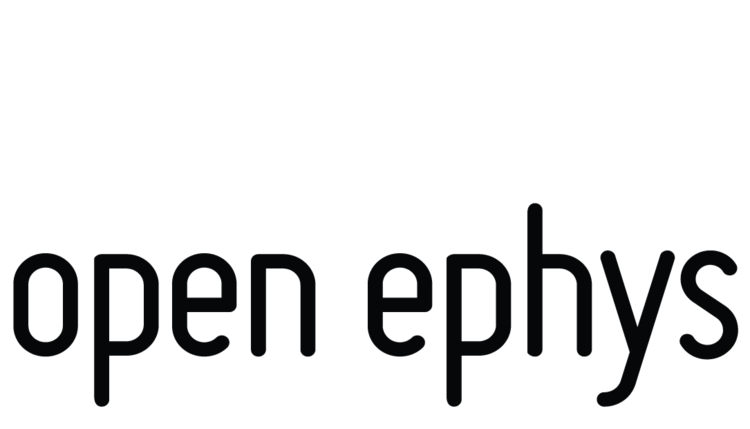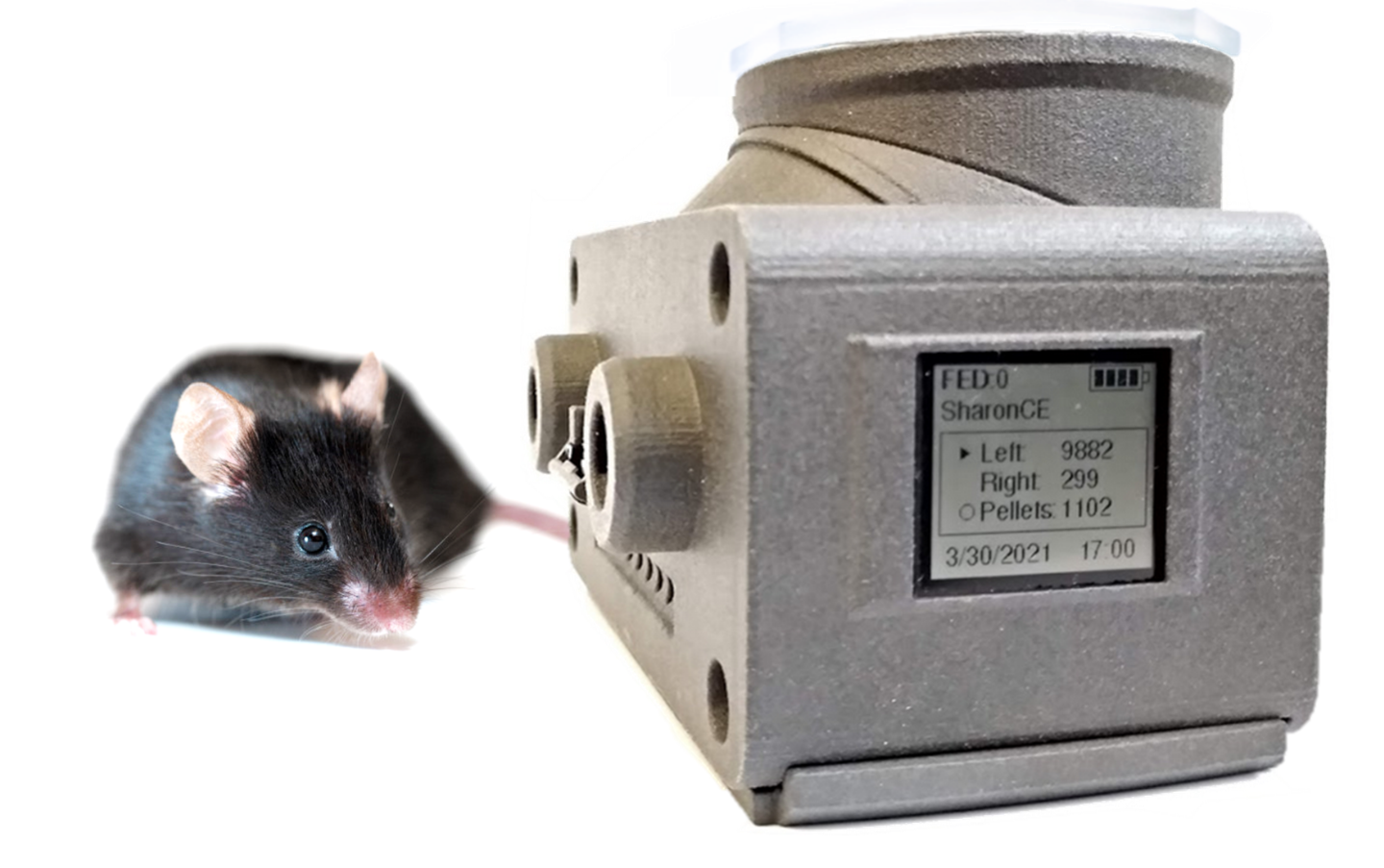FED3.1
FED3.1
SKU: OEPS-7510
Discontinued: This product has been discontinued and will remain available for purchase until all remaining stock is sold.. The recommended alternative is OEPS-7511.
FED3 is a homecage pellet-dispensing device for training mice on operant tasks. Click here to watch an introductory video.
FED3.1 is compact and wireless so it can be placed in the homecage or mounted to the side with magnets. Its rechargeable battery lasts about a week between charges. The top lid is transparent to monitor the amount of available pellets. The FED3.1 includes a built-in screen used to provide real-time feedback to the experimenter. FED3.1 is open-source and fully programmable with the FED Arduino library which includes more than 10 pre-programmed feeding and stimulation paradigms.
New features in FED3.1, our enhanced version of the popular FED3 (yellow arrows in pictures):
Two extra LEDs (RGBW) inside the pokes, that can be used for animal cues.
Audio instead of BNC connector. This connector is smaller, and cables are more flexible, reducing the space taken up by the FED. You can get an audio-to-BNC adapter here.
New, handy location of the battery connector, to make it easier to replace the rechargeable internal battery.
Package contains:
1x Assembled FED3.1, quality-tested and programmed to your time-zone.
This device requires additional components to operate. Please check the device connectivity list to purchase any cables, tethers and power supplies you might need.
Ordering
If you need a formal quote and/or prefer bank transfer as the payment method, please contact us via info@oeps.tech.
More info about FED3
Quick-start instructions can be found here. Very handy once you have the device ready to go.
FED3 was designed with experimental flexibility in mind, to allow researchers to train and test mice wherever they'd like - in dedicated chambers, in home cages, or even inside of other scientific equipment.
Mice interact with FED3 through two nose-pokes, and FED3 responds with visual stimuli, auditory stimuli, and pellets.
FED3 also includes an input/output jack for time-stamping behavior in ephys recordings or controlling lasers for optogenetic stimulation.
A built-in screen provides real-time feedback to the experimenter, and all behavioral events are time-stamped and written to an on-board microSD card for later analysis.
FED3 can be charged via a microUSB cable, or empty batteries can be swapped with charged ones.
While FED3 supports custom programs, it ships with the following programs so you can start training right away:
- Fixed-Ratio 1, 3, and 5
- Progressive Ratio
- Extinction
- Light tracking
- Optogenetic self-stimulation
- Free-feeding
- Time-restricted feeding
Pellet information
Pellets used with FED3 should be 20mg in size. Smaller than this will likely not be detected by the pellet well, and larger may not fit through the dispensing mechanism.
You can find more information here.
Data Analysis
The program output is saved to the SD card in CSV format. The CSV output file includes the timestamps of each event, such as nose pokes or pellet retrievals. Open-source libraries to analyze this data exist: check out the fed3 Python library (based on the original FED3VIZ GUI) written by Tom Earnest of the Kravitz lab, and the FED3_time_bins GUI by Harry Dempsey of the Andrews lab and Foldi lab.
Authorship
FED3 was designed by:
- Lex Kravitz (Washington University)
- Mohamed Ali (University of Maryland)
- Katrina Nguyen (Carnegie Mellon)
- Filipe Carvalho (Open Ephys Production Site)
It was programmed in the Arduino IDE and uses parts and related code from Adafruit.
Publications that used FED
London et al., (J Neuroscience, 2018) synchronized FED with electrophysiological recordings in the nucleus accumbens to look at spiking around feeding.
Li et al., (Cell Metabolism, 2018) used FED to measure food intake while manipulating subpopulations of hypothalamic neurons.
Burnett et al., (eLife, 2019) used FED to measure the interactions between food intake and other behaviors.
Vachez et al., used FED3 to control optogenetic stimulation in an operant self-stimulation assay.
Briefly et al., used the original FED1 device to measure food intake.
Mazzone et al., used FED3 to pair food intake with dopamine neuron stimulation, changing the reinforcing value of food.
Rodriguez et al , used multiple FED3s in a preference assay.
Matikainen-Ankney et al, used FED3 to measure food seeking in mice after weight loss.
Design files, source code and community:
Files and source code can be found here.
Helpful videos can be found here.
And the Google Group here.











